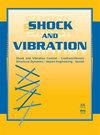An Integrated Bearing Fault Diagnosis Method Based on Multibranch SKNet and Enhanced Inception-ResNet-v2
IF 1.2
4区 工程技术
Q3 ACOUSTICS
引用次数: 0
Abstract
Deep learning has recently received extensive attention in the field of rolling-bearing fault diagnosis owing to its powerful feature expression capability. With the help of deep learning, we can fully extract the deep features hidden in the data, significantly improving the accuracy and efficiency of fault diagnosis. Despite this progress, deep learning still faces two outstanding problems. (1) Each layer uses the same convolution kernel to extract features, making it difficult to adaptively select convolution kernels based on the features of the input image, which limits the network’s adaptability to different input features and leads to weak feature extraction. (2) Large number of parameters and long training time. To solve the above problems, this paper proposes an integrated deep neural network that combines an improved selective kernel network (SKNet) with an enhanced Inception-ResNet-v2, named SIR-CNN. First, based on the SKNet, a new three-branch SKNet was designed. Second, the new SKNet is embedded into a depthwise separable convolution network such that the model can adaptively select convolution kernels of different sizes during training. Furthermore, the convolution structure in the Inception-ResNet-v2 network was replaced by the improved depthwise separable convolution network to achieve effective feature extraction. Finally, the time-frequency maps of the raw vibration signals are obtained through short-time Fourier transform (STFT) and then sent to the proposed SIR-CNN network for experiments. The experimental results show that the proposed SIR-CNN achieves superior performance compared to other methods.基于多分支 SKNet 和增强型 Inception-ResNet-v2 的集成轴承故障诊断方法
深度学习因其强大的特征表达能力,近年来在滚动轴承故障诊断领域受到广泛关注。借助深度学习,我们可以充分提取隐藏在数据中的深层特征,显著提高故障诊断的准确性和效率。尽管取得了这一进展,深度学习仍面临两个突出问题。(1)各层使用相同的卷积核提取特征,难以根据输入图像的特征自适应地选择卷积核,限制了网络对不同输入特征的适应性,导致特征提取能力较弱。(2) 参数数量多,训练时间长。为解决上述问题,本文提出了一种集成深度神经网络,将改进的选择性内核网络(SKNet)与增强型 Inception-ResNet-v2 结合起来,命名为 SIR-CNN。首先,在 SKNet 的基础上设计了一个新的三分支 SKNet。其次,将新的 SKNet 嵌入到深度可分离卷积网络中,这样模型就能在训练过程中自适应地选择不同大小的卷积核。此外,Inception-ResNet-v2 网络中的卷积结构被改进的深度可分离卷积网络所取代,以实现有效的特征提取。最后,通过短时傅里叶变换(STFT)获得原始振动信号的时频图,然后将其发送到所提出的 SIR-CNN 网络中进行实验。实验结果表明,与其他方法相比,所提出的 SIR-CNN 实现了更优越的性能。
本文章由计算机程序翻译,如有差异,请以英文原文为准。
求助全文
约1分钟内获得全文
求助全文
来源期刊

Shock and Vibration
物理-工程:机械
CiteScore
3.40
自引率
6.20%
发文量
384
审稿时长
3 months
期刊介绍:
Shock and Vibration publishes papers on all aspects of shock and vibration, especially in relation to civil, mechanical and aerospace engineering applications, as well as transport, materials and geoscience. Papers may be theoretical or experimental, and either fundamental or highly applied.
 求助内容:
求助内容: 应助结果提醒方式:
应助结果提醒方式:


